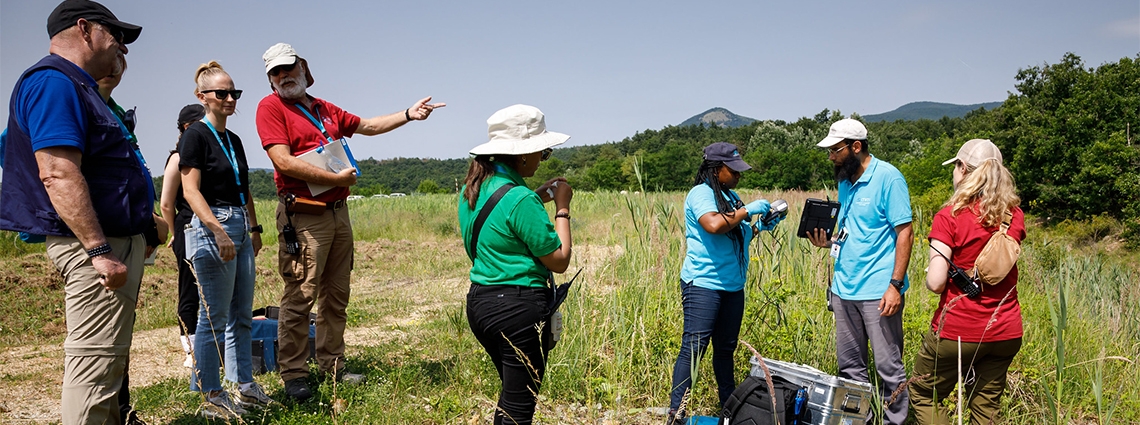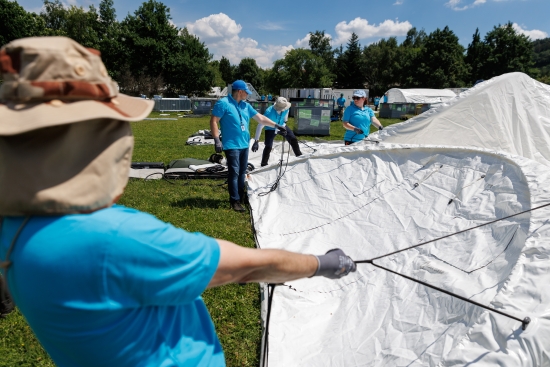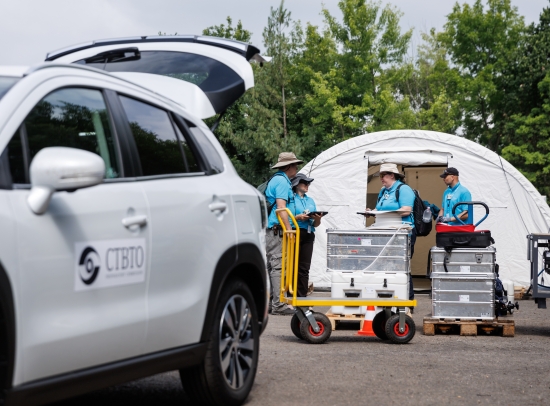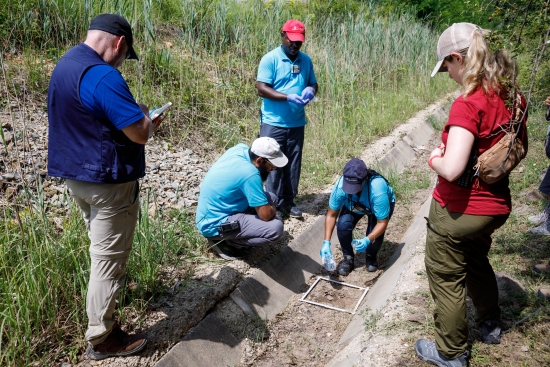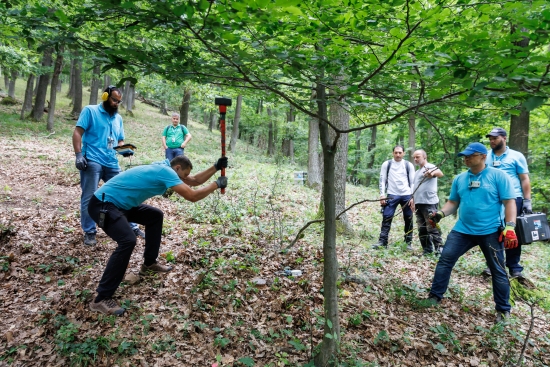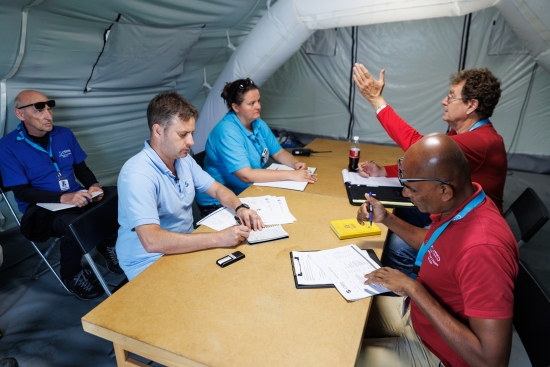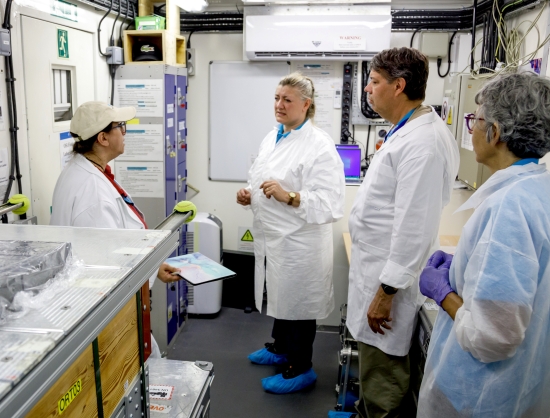Build-Up Exercise 2024: OSI capabilities tested in new terrain
A scenario unfolds: 15 May 2024, the Comprehensive Nuclear-Test-Ban Treaty’s (CTBT) International Monitoring System (IMS) detects an unusual event in a mountainous region, dense with forests, in the fictional Republic of Bludor. Based on this data, the Republic of Whedor submits a request for an on-site inspection (OSI) which is approved by the Executive Council (EC) of the Comprehensive Nuclear-Test-Ban Treaty Organization (CTBTO). Surrogate inspectors and technical support staff, along with nearly 100 tonnes of equipment, are deployed to seek definitive evidence on the nature of the trigger event. After 25 days, the inspection team submits the Progress Inspection Report (PIR) to the Executive Council and requests an extension of the inspection. The OSI extension is granted. The search continues.
This was the setting in which nearly 200 participants, from over 40 countries, came together for the OSI Build-Up Exercise (BUE24), which was conducted at the Base of Operations (BoO) hosted by Hungary near the town of Gyöngyös, and at the Operations Support Centre (OSC) at CTBTO Headquarters in Vienna, Austria.
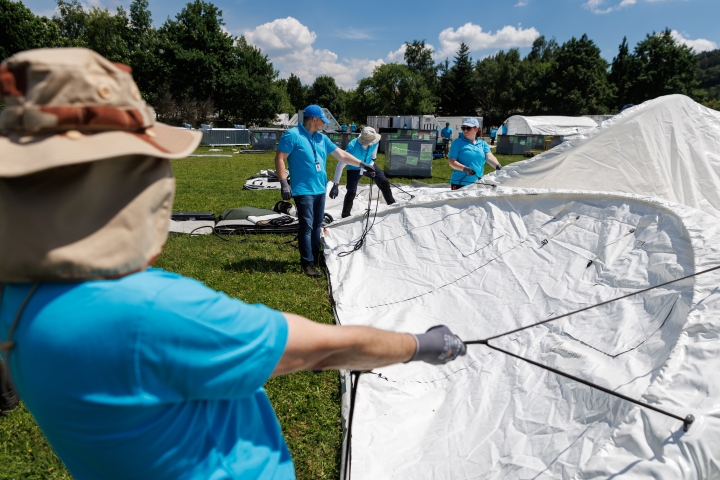
Surrogate inspectors work together to set up the Base of Operations (BoO)
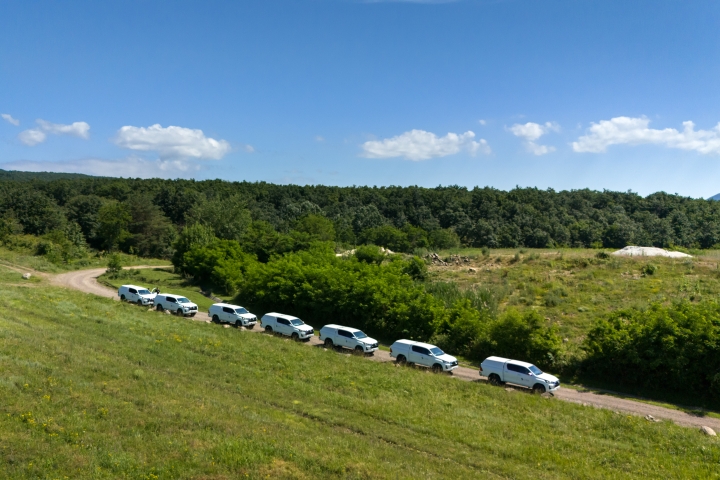
The Inspection Team familiarised themselves with the inspection area
Why is the OSI Build-Up Exercise 2024 (BUE24) important?
BUE24 is a medium-scale integrated field exercise developed as part of the OSI Exercise Programme for 2022-2025 and designed to test and improve several OSI techniques, mechanisms, systems and procedures in an integrated manner. One of the aims of BUE24 was to test OSI capabilities in a moderately mountainous environment with challenging manmade features such as abandoned mine shafts. It also tested the use of updated Inspection Team Functionality (ITF) and search logic, data flow, and the use of Geospatial Information Management (GIMO) for OSI in a fully integrated manner.
“In real life only with a full range of on-the-spot scientific tests can the world be sure whether an explosion was or was not a nuclear test,” noted Robert Floyd, CTBTO Executive Secretary. “That’s what the Build-Up Exercise in Hungary was all about - seeing what the CTBTO’s highest levels of preparation and training look like, in close to real operating conditions.”
Who took part in the BUE24?
The exercise’s success was due in part to the teamwork displayed by the participants in the field and at the OSC. The surrogate Inspection Team put into practice the learnings from the preparatory trainings that led up to this exercise. To ensure the BUE24 provided an accurate environment, some participants played the role of Inspected State Party (ISP) representatives, posing a realistic challenge to the conduct of the OSI.
Other participants in the exercise included the Control Team, which developed the scenario, ensured the stages of the simulation were implemented by the Inspection Team, and assessed whether it had reacted to unforeseen developments in an expected manner. Members of the Evaluation Team observed OSI techniques, methodologies, and procedures to assess their efficiency and effectiveness, while the Exercise Management Team ensured all organizational, administrative, and logistical aspects of the exercise were implemented, including the Inspection and ISP teams’ ability to stay in character for the duration of the exercise.
Throughout the three-week exercise, CTBTO staff at the Operations Support Centre in Vienna worked in shifts and were on call in the OSC to support the inspection team in the field for the entirety of BUE24.
A day in the life of a surrogate inspector
Surrogate inspectors had full schedules during the exercise. Depending on the circumstances and field of expertise, they were either deployed to the field, worked in the on-site field lab, calibrated equipment or performed other duties at the BoO, and they maintained detailed records and wrote daily reports of their activities.

The Inspection Team Leader speaking to the Inspection Team during a daily meeting

The Inspection Field Team prepares equipment for deployment in the Boo receiving area
The Inspection Team also held regular meetings to coordinate and plan its work, including the field missions which had to be submitted to Inspected State Party representatives two days in advance. These included the expected search zones, the techniques and equipment to be used, and logistical requirements. Every morning, they would pack the approved equipment in the provided vehicles and head to the inspection area. Throughout it all, they recorded all the data on their GIMO tablets, ensuring the chain of custody of the samples could be verified and easily traced.
Narrowing down on the search zones
The OSI techniques used ranged from less intrusive ones in the initial phase of the inspection such as visual observation and environmental sampling, to increasingly intrusive ones during the continuation phase, including ground penetrating radar, resonance seismometry and active seismic surveys. The surrogate inspectors used defined and discrete methodological steps (search logic) to determine the scope of their missions, and to narrow the search zones within the inspection area.

Surrogate inspector collects a soil sample in a shallow ditch
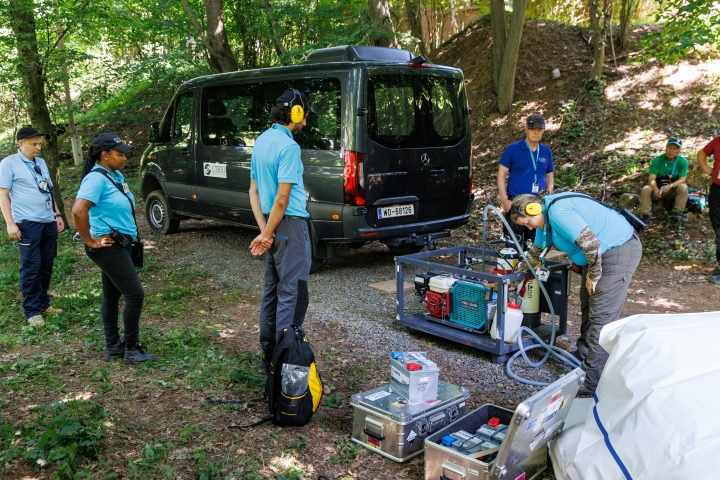
The Inspection Field Team setting up a compressor for collecting an air sample
The Surrogate Inspection Team and the Inspected State Party representatives held regular meetings to negotiate the details of the OSI and ensure that the activities were undertaken in adherence to the Treaty and its Protocol.
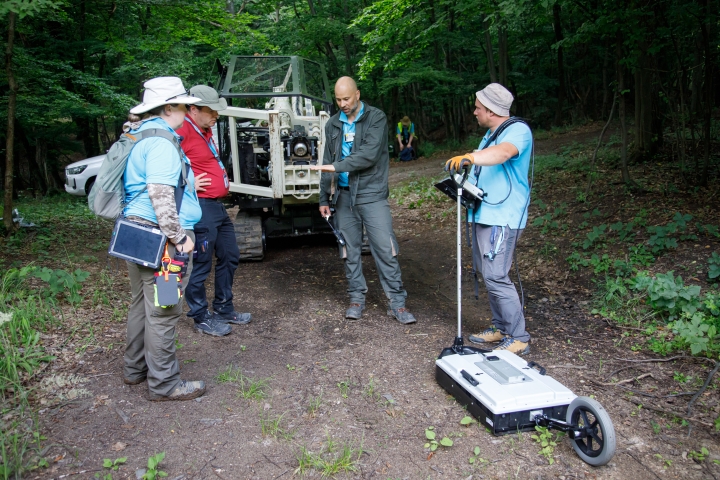
Surrogate inspectors determine location for use of the Geoprobe
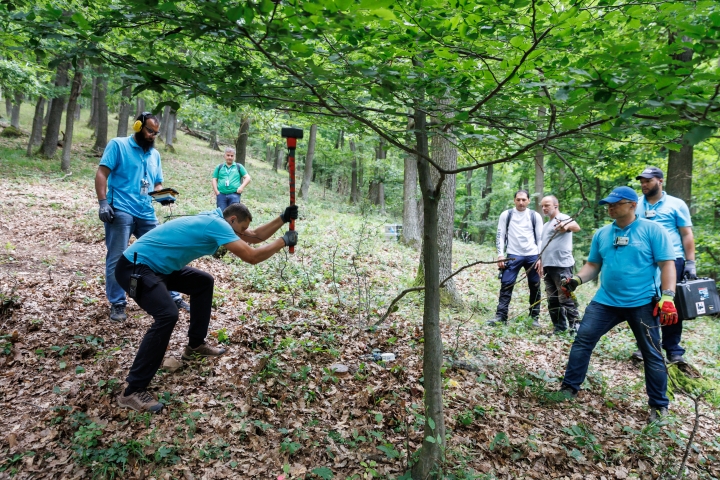
Surrogate inspectors perform an active seismic survey on a hill in one of the search zones
Ensuring the chain of custody
Upon return to the Base of Operations after a field mission, the field teams followed decontamination protocols, ensuring no contaminants from the search zone were brought within the working area of the BoO. In parallel, the field samples were handed over to the OSI field lab for processing. The data collected via the GIMO tablets was also downloaded, with the ISP having a chance to determine or negotiate its sensitivity level with the Inspection Team prior to it being logged.
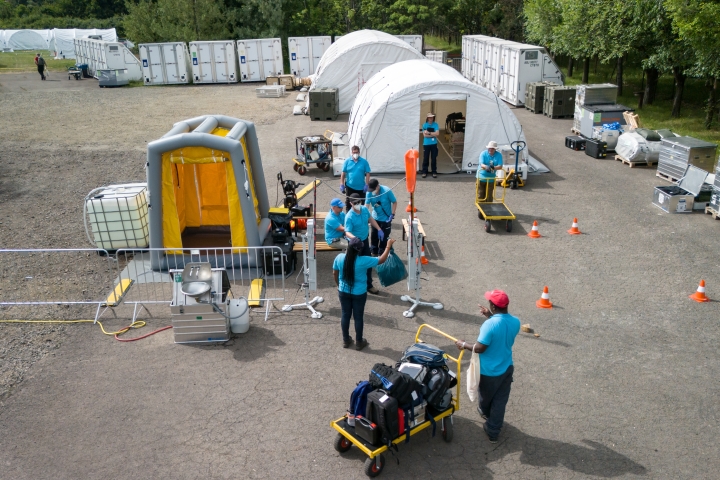
The decontamination line at the Base of Operations
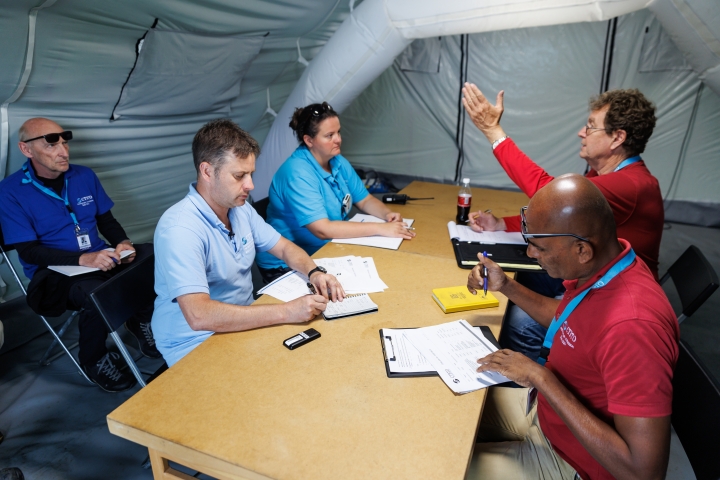
Representatives of the Inspection team and the Inspected State Party meet to negotiate OSI aspects
Technicians in the OSI field lab worked tirelessly to analyse the samples, while the additional data collected was used to further refine and determine the upcoming activities of the Inspection Team. Following the inspection team functionality concept, the surrogate inspectors were able to act within an information-led search logic framework that allowed them to systematically collect facts and information to narrow down the search zone.
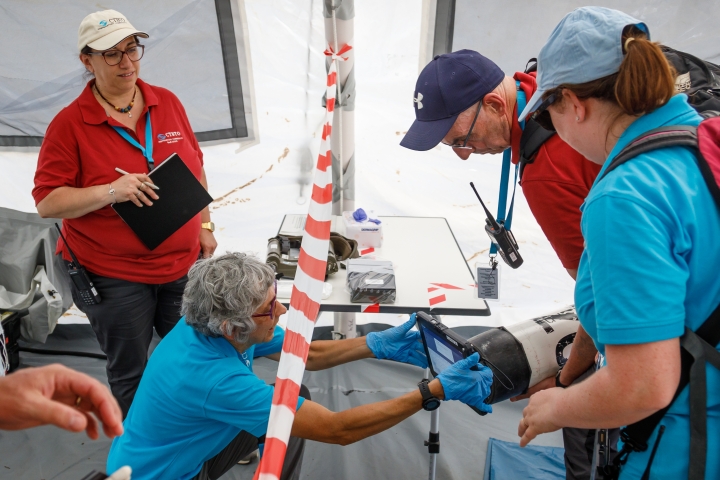
A surrogate inspector logs a sample upon receiving it in the BoO
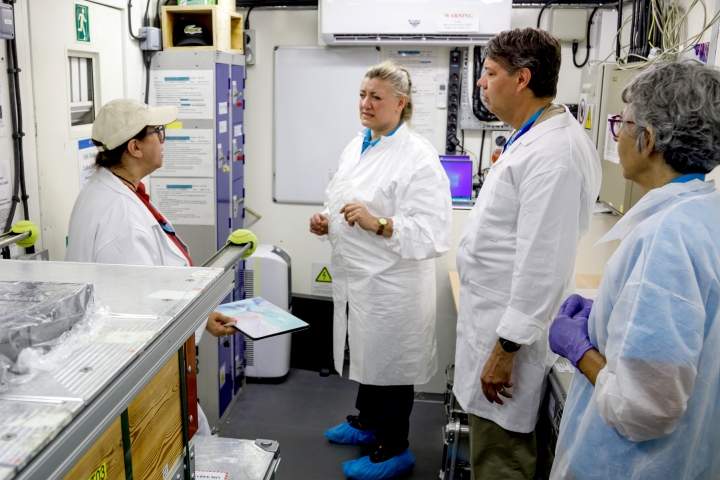
An Inspected State Party representative speaks to surrogate inspectors in the OSI field lab
Next steps in validating OSI operational capabilities
“I am certain that lessons have been learned during this exercise. This BUE24 not only serves as a practice event, it is also an important training opportunity to test and evaluate OSI capabilities in preparation for the conduct of an effective Integrated Field Exercise (IFE) in 2025,” said Oleg Rozhkov, Director of OSI Division.
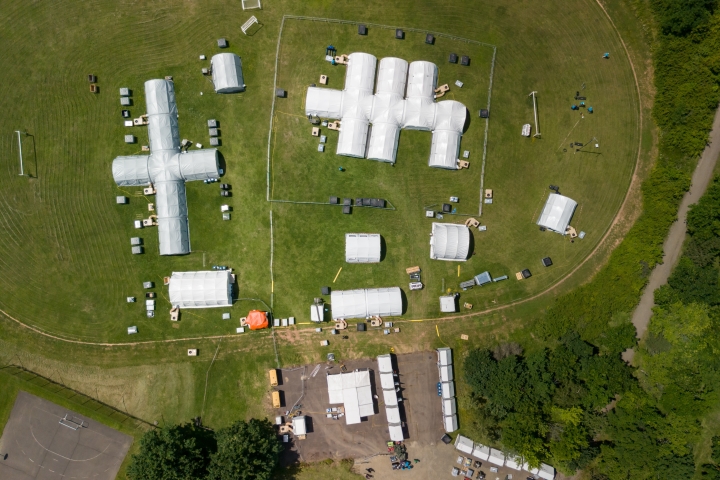
Aerial view of the Base of Operations (BoO)

Inspection team members scouting one of the search zones
Integrated Field Exercises are among the largest and most technically complex multinational exercises in the field of chemical, biological, radiological, and nuclear (CBRN) non-proliferation and arms control in the world. IFE 2025 will be of particular significance as it will serve as a prime opportunity to demonstrate and assess overall OSI capabilities and validate a wide range of new and upgraded technologies, equipment, and procedures in a tropical environment in a near-realistic OSI exercise scenario.
“The development of On-Site Inspection capability as the ultimate verification measure of the CTBT is vital in today’s challenging and ever-changing geopolitical environment,” said Jennifer Stevanovic, BUE24 Inspection Team Leader. “Exercises such BUE24 allow us to understand and hone our capability and focus our efforts to continuously improve. OSI provides an entirely unique opportunity in arms control for States to work together towards a common goal and forge a path towards a future free of nuclear testing.”
